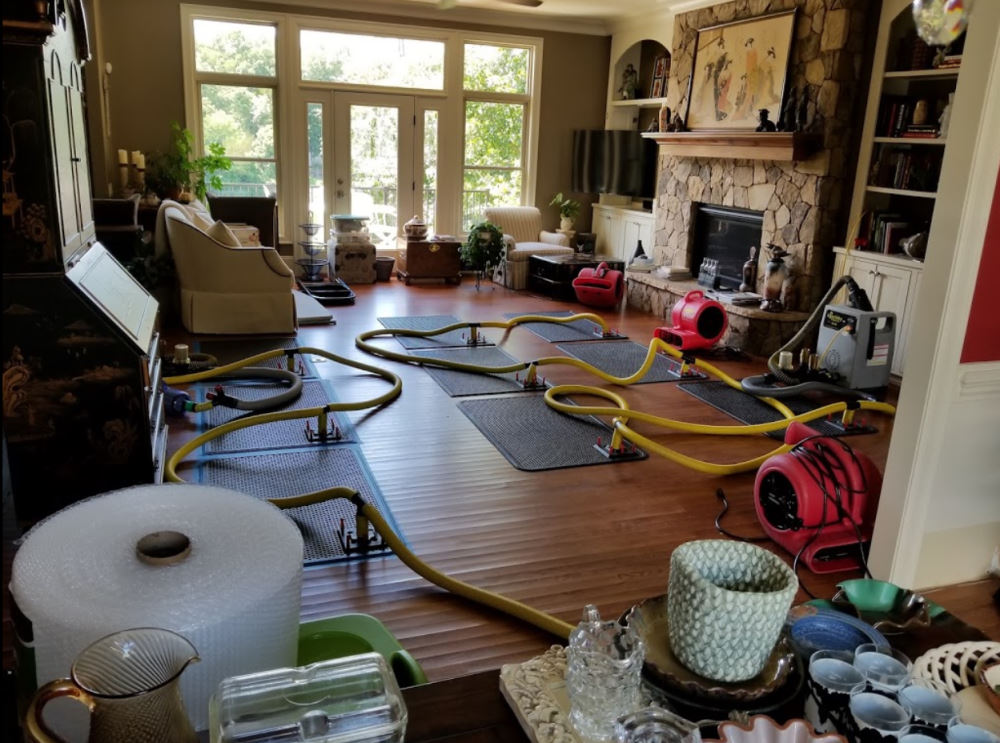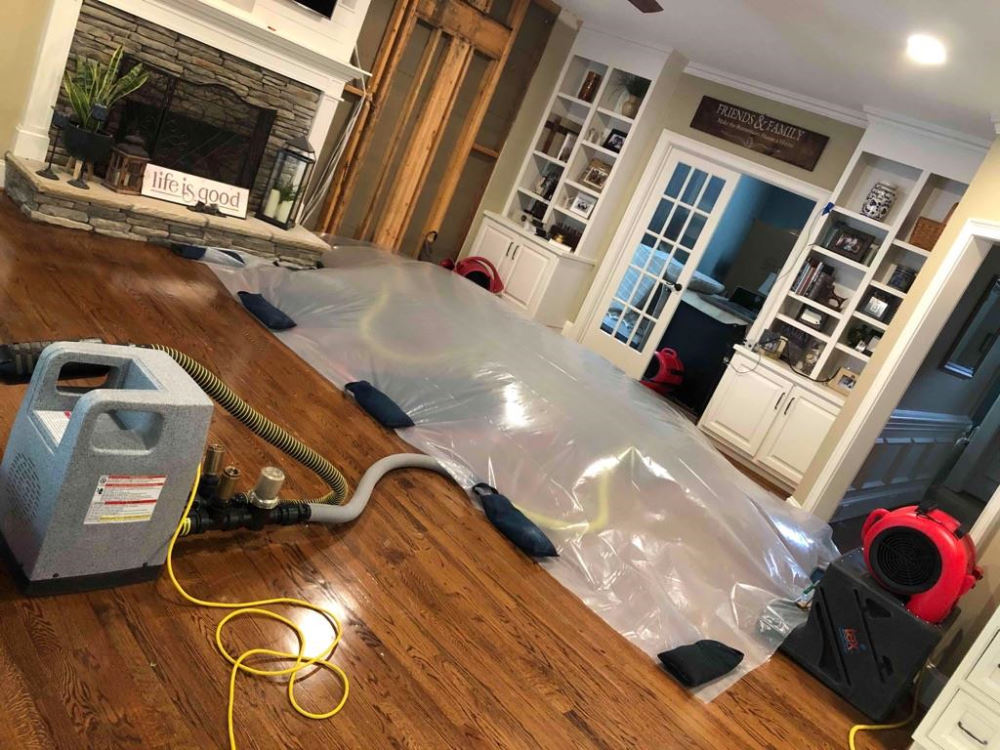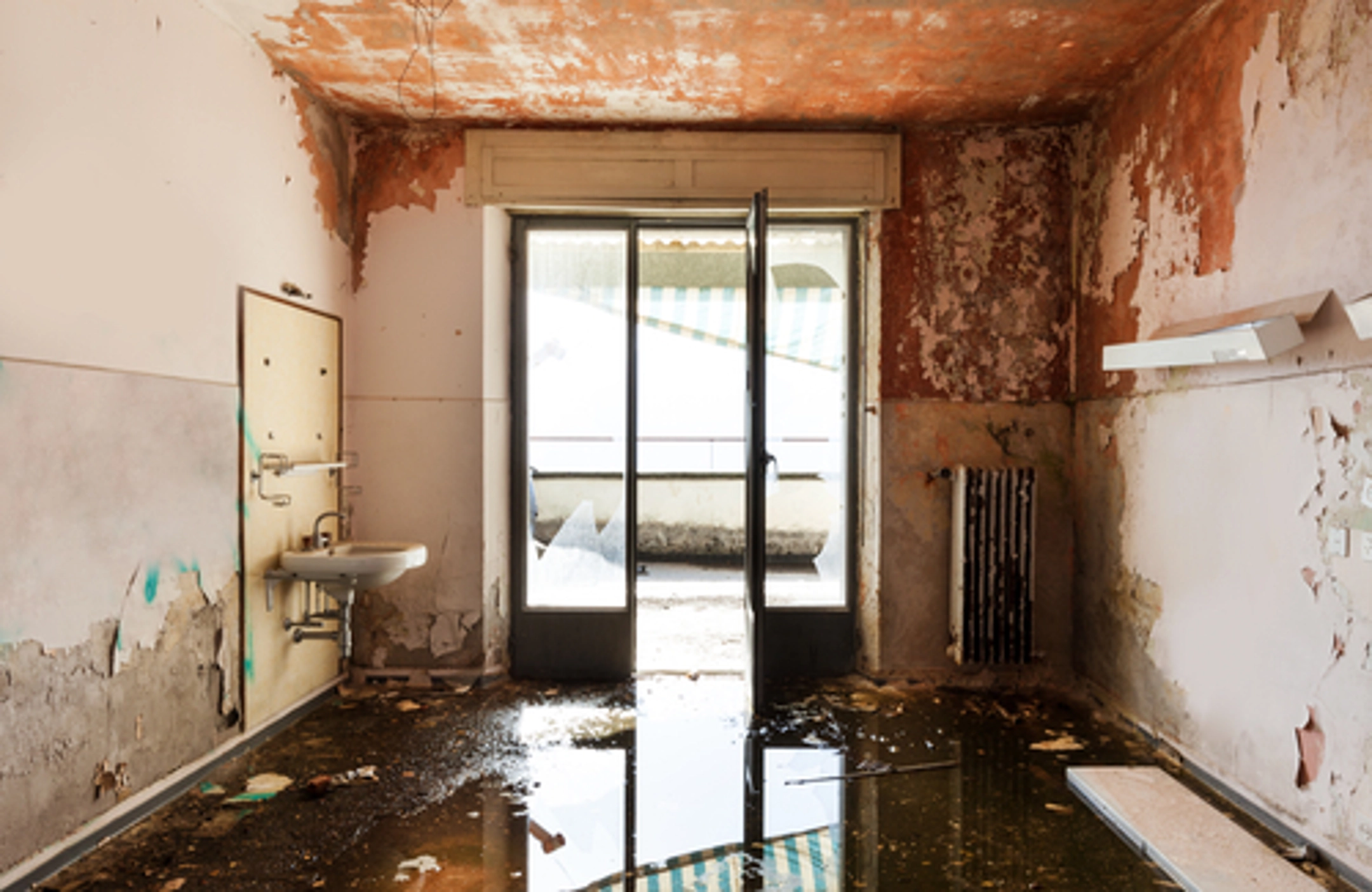Essential Actions to Comply With for Efficient Water Damage Remediation in your house
When confronted with water damages in your home, understanding the important actions for effective remediation can make all the difference. You need to assess the damages and guarantee security before dealing with the problem. Quiting the resource of water is essential, however it's just the start. As soon as you have actually managed that, there's a collection of activities you should take to protect your building from further problems. Let's discover what you ought to do next.
Examine the Damages
The very first step is to assess the damage extensively when you find water damage in your home. Begin by determining the source of the water invasion. Check for leakages, ruptured pipes, or various other concerns creating the trouble. Next off, take a look at the influenced areas for visible indicators of damage, including bending, mold, or staining development. Do not fail to remember to look in surprise spots like behind wall surfaces or under floor covering, as water can permeate right into these areas unnoticed.Document the damages by taking clear photos and notes. When discussing the scenario with your insurance coverage supplier or repair experts, this will certainly assist you. Take note of the sort of products impacted, as various products need different reconstruction strategies. Review the degree of the damages. Is it small or extensive? Understanding the range will certainly guide you in making a decision whether to handle it on your own or contact the professionals for an extra comprehensive reconstruction procedure.

Guarantee Security
Prior to you start any remediation job, ensuring your safety is vital. Analyze the condition of your home. If the water's deep or if you observe electric hazards, do not go into the location. Shut off the electrical energy and gas supply to stop crashes. Put on protective equipment like masks, boots, and handwear covers to secure yourself from impurities or mold.It's vital to remain familiar with your surroundings; expect unsafe surfaces and sharp things. If the water is from a sewer backup, treat it as contaminated materials. Keep children and pets away from affected locations to prevent exposure.Once you have actually taken these preventative measures, you can proceed with the restoration procedure. Bear in mind, your safety and security precedes, and if you're ever uncertain, it's ideal to seek advice from an expert. Taking these steps will certainly help guarantee you're prepared to deal with the reconstruction securely and properly.
Quit the Source of Water
After ensuring your security, the next step is to quit the source of water. Determine where the leak is coming from. Maybe a burst pipeline, a defective device, or even heavy rainwater getting in through a harmed roof. Turn off the major water supply to your home to prevent further flooding if it's a plumbing problem. For devices, disconnect them and close off their supply of water valves.If the source is outside, like rainwater, attempt to divert it away from your home using sandbags or various other barriers. For minor leakages, you could be able to use tape or a sealant momentarily until an expert can repair it. Keep in mind, attending to the resource rapidly is crucial to lessening damage and protecting against mold growth. As soon as you've quit the water, you'll remain in a much better setting to proceed to the following steps in the restoration procedure.

Get Rid Of Excess Water
Act rapidly to eliminate excess water, as standing water can result in much more considerable damages and mold growth. Initially, collect your devices: a wet/dry vacuum, buckets, and towels. You can use towels to saturate up the dampness if the water is shallow. For much deeper water, a wet/dry vacuum is your ideal bet. Make certain to empty the vacuum cleaner frequently to stay clear of overflow.If the water is contaminated, like from a sewage back-up, wear protective gear, consisting of masks and handwear covers, to keep yourself secure. As soon as you've gotten rid of as much water as possible, look for surprise pockets of wetness in edges and under furnishings, as these can harbor mold.Don' t fail to remember to transform off electric devices and power outlets in wet locations to avoid threats. This first step is essential in reducing damage and setting the stage for an effective remediation process.
Dry and Dehumidify the Location
It's crucial to completely dry and evaporate the location extensively once you've removed the excess water. Start by utilizing dehumidifiers successfully to draw dampness out of the air and avoid mold growth. Maintain an eye on moisture levels to ensure the area dries out entirely.
Remove Standing Water
To efficiently deal with water damage, you need to focus on removing standing water as quickly as possible. Beginning by collecting essential devices, like a wet/dry vacuum cleaner or a pump, depending upon the volume of water. If the water is shallow, a vacuum must work. For bigger quantities, a pump is much more reliable. While working, make certain to put on protective gear to maintain on your own risk-free from contaminants. As you get rid of the water, take notice of concealed locations like under furnishings or in corners where water might accumulate. When you've eliminated the bulk, your area will start to dry out. This action is necessary, as remaining water can result in mold and mildew growth and more extensive damages.
Usage Dehumidifiers Successfully
How can you effectively utilize dehumidifiers to dry and evaporate your space? Beginning by putting your dehumidifier in one of the most afflicted area, preferably where water damage is most extreme. Ensure to shut all doors and home windows to produce a covered atmosphere. Transform on the dehumidifier and set it to the appropriate humidity degree, typically around 30-50%. Vacant the water collection tank regularly, or consider using a design with a continuous water drainage option for ease. Preferably, utilize followers to improve air movement, assisting the dehumidifier job more effectively. Maintain the dehumidifier running until you're positive that the location is thoroughly dried, preventing mold development and added damage (Flood Damage Restoration). This action is important for effective water damages restoration
Monitor Humidity Degrees
Surveillance moisture levels is important throughout the drying procedure, as it helps ensure your room continues to be totally free from excess wetness. Spend in a reliable hygrometer to track humidity accurately. Preferably, you desire to keep degrees in between 30% and 50%. If moisture analyses rise above this range, you might require to readjust your dehumidifiers or fans to improve air flow. Inspect the readings on find more information a regular basis, specifically in locations vulnerable to wetness, like cellars or washrooms. If you see relentless high moisture, take into consideration increasing ventilation or utilizing additional dehumidifiers. Staying on top of these levels not only quickens the drying out process but also avoids mold and mildew growth, guaranteeing your home remains comfy and safe.
Clean and Disinfect Affected Surfaces

Recover and Repair Your Home
After cleaning and decontaminating the influenced areas, it's time to recover and repair your home. Begin by evaluating the damages. Look for structural concerns, like compromised walls or floorings, and address any kind of required repairs. Changing damaged drywall or floor covering is necessary for both aesthetic appeals and safety.If your furniture or items were impacted, consider whether they can be restored or need substitute. Tidy or skillfully restore things where possible.Next, touch and paint walls up any kind of areas that require interest. This not just enhances look however likewise safeguards surface areas from future water damage.Don' t fail to remember to examine your plumbing and appliances for leakages, ensuring every little thing's operating properly. Think about mounting a dehumidifier to prevent future dampness issues. By taking these steps, you'll recover your home to its previous splendor and create a much safer living atmosphere.
Regularly Asked Inquiries
The Length Of Time Does Water Damage Repair Typically Take?
Water damage remediation normally takes anywhere from a couple of days to numerous weeks, depending on the extent of the damage (Water Damage Cleanup). You'll want to examine the scenario promptly to decrease further complications and guarantee proper remediation
Will My Insurance Cover Water Damage Restoration Costs?
Your insurance might cover water damages restoration costs, yet it relies on your plan. Examine your insurance coverage information and call your insurance representative to clarify what's included and what you require to sue.
Can I Deal With Water Damages Remediation Myself?
You can take care of water damages remediation yourself, yet it's crucial to evaluate the situation. You could want to call professionals if it's considerable. Constantly prioritize safety and assure you've obtained the right tools.
What Are the Signs of Hidden Water Damages?
You might see indications of hidden water damages like distorted wall surfaces, mildewy odors, or staining. If your floors really feel mushy or you spot mold and mildew, it's time to examine additionally before the scenario aggravates.
Just How Can I Avoid Future Water Damages in My Home?
To stop future water damage in your house, you should on a regular basis evaluate plumbing, seal fractures, keep gutters, and guarantee appropriate water drainage. Installing a sump pump and moisture barriers can additionally aid keep your area dry. When you uncover water damages in your home, the first step is to evaluate the damages extensively. Act promptly to remove excess water, as standing water can lead to much more substantial damages and mold and mildew development. To properly tackle water damage, you need to focus on eliminating standing water as swiftly as feasible. As you remove find here the water, pay attention to hidden locations like under furnishings or in edges where water could collect. Water damage repair commonly takes anywhere from a couple of days to several weeks, depending on the level of the damage.